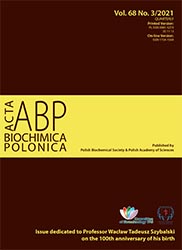Gene-circuit therapy on the horizon: synthetic biology tools for engineered therapeutics
Abstract
Therapeutic genome modification requires precise control over the introduced therapeutic functions. Current approaches of gene and cell therapy fail to deliver such command and rely on semi-quantitative methods with limited influence on timing, contextuality and levels of transgene expression, and hence on therapeutic function. Synthetic biology offers new opportunities for quantitative functionality in designing therapeutic systems and their components. Here, we discuss synthetic biology tools in their therapeutic context, with examples of proof-of-principle and clinical applications of engineered synthetic biomolecules and higher-order functional systems, i.e. gene circuits. We also present the prospects of future development towards advanced gene-circuit therapy.
Acta Biochimica Polonica is an OpenAccess quarterly and publishes four issues a year. All contents are distributed under the Creative Commons Attribution-ShareAlike 4.0 International (CC BY 4.0) license. Everybody may use the content following terms: Attribution — You must give appropriate credit, provide a link to the license, and indicate if changes were made. You may do so in any reasonable manner, but not in any way that suggests the licensor endorses you or your use.
Copyright for all published papers © stays with the authors.
Copyright for the journal: © Polish Biochemical Society.


